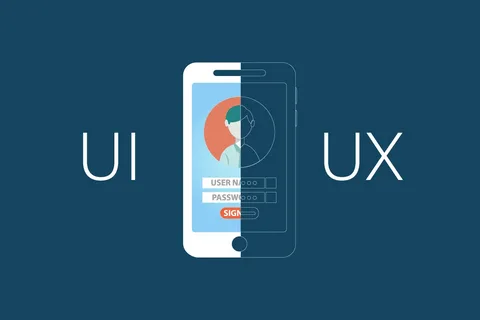How Digital Signage Software Can Improve Healthcare Services

The healthcare industry is constantly evolving, and with the advent of technology, it has witnessed significant transformations in recent years. One such transformative tool is digital signage software, which has revolutionized the way healthcare services are delivered and managed. Digital signage software has found a valuable place in healthcare facilities, offering numerous benefits that enhance patient experiences, streamline operations, and improve overall service quality. We will delve into how digital signage software is revolutionizing the healthcare sector, the key advantages it brings, and the various applications it has within healthcare facilities.
The Role of Digital Signage in Healthcare
Digital signage is a dynamic, interactive display solution that uses digital screens, such as LED displays or LCD monitors, to broadcast content. In healthcare settings, this technology has emerged as a versatile tool with multiple applications aimed at enhancing the overall patient experience and optimizing internal processes.
- Patient Information and Education: One of the primary uses of digital signage in healthcare is providing patients with pertinent information. Waiting rooms, corridors, and reception areas are often equipped with digital screens that display important announcements, wait times, and educational content. Patients can learn about their conditions, treatment options, and preventive care while waiting for appointments, thereby improving their health literacy.
- Wayfinding and Navigation: Large healthcare facilities can be confusing to navigate. Digital signage helps patients and visitors find their way around easily. Interactive maps and real-time directions on digital screens guide them to specific departments, clinics, or rooms, reducing stress and frustration.
- Appointment and Queue Management: Digital signage facilitates efficient appointment and queue management. Patients can check in and receive updates on their appointment status through interactive displays. This not only reduces wait times but also enhances the overall patient experience.
- Health Promotion: Healthcare providers use digital signage to promote wellness and preventive care. Screens can display messages encouraging healthy lifestyle choices, flu vaccinations, and other healthcare initiatives. This can lead to better patient outcomes and reduce the burden on healthcare facilities.
- Emergency Notifications: In emergencies or disasters, digital signage serves as a vital communication tool. Important announcements, evacuation instructions, and safety information can be quickly disseminated to patients, staff, and visitors.
- Internal Communication: Hospitals and clinics rely on digital signage for internal communication. Staff can access important updates, meeting schedules, and announcements in real-time. This ensures that the entire healthcare team remains informed and coordinated.
Key Advantages of Digital Signage Software in Healthcare
- Improved Patient Engagement: Digital signage captures and maintains patient attention through dynamic and visually appealing content. This engagement can be leveraged to educate patients about their health, treatment options, and the importance of follow-up care.
- Enhanced Efficiency: Digital signage streamlines administrative processes by automating tasks like appointment scheduling, patient check-in, and queue management. This allows healthcare staff to allocate more time to patient care.
- Reduced Perceived Wait Times: Waiting for appointments can be stressful for patients. Digital signage can display entertainment, news, or educational content, making wait times feel shorter. This not only improves patient satisfaction but also reduces perceived wait times.
- Real-time Updates: Healthcare facilities are dynamic environments with constantly changing information. Digital signage allows for real-time updates, ensuring that patients and staff have access to the most current information.
- Cost Savings: While the initial investment in digital signage software and hardware may seem substantial, it often results in long-term cost savings. It reduces the need for printed materials, such as brochures and flyers, and can optimize staff time and resource allocation.
- Enhanced Communication: Effective communication is critical in healthcare. Digital signage ensures that important messages reach their intended audience promptly, leading to better patient outcomes and safety.
Applications of Digital Signage Software in Healthcare
- Patient Check-in Kiosks: Patients can check in electronically using self-service kiosks equipped with digital signage. This reduces wait times at reception desks and frees up staff to focus on patient care.
- Education and Health Promotion: Digital screens in waiting rooms and patient areas can display educational content, health tips, and information on upcoming healthcare events or seminars.
- Telemedicine Support: In the era of telemedicine, digital signage can display instructions for virtual appointments and provide technical support for patients connecting remotely.
- Pharmacy and Medication Information: In hospitals and clinics, digital signage in pharmacy areas can display medication information, dosage instructions, and potential side effects to improve medication adherence.
- Emergency Preparedness: Digital signage is crucial in emergency scenarios. It can provide evacuation instructions, display emergency contact numbers, and offer real-time updates on the situation.
- Staff Training and Communication: Digital screens are used for staff training and orientation. They also serve as a means for internal communication, ensuring that all employees are well-informed.
Challenges and Considerations
While digital signage software offers numerous benefits in healthcare, there are also challenges and considerations to keep in mind:
- Privacy and Security: Protecting patient information is paramount. Healthcare facilities must ensure that digital signage complies with privacy regulations, and content is securely managed.
- Content Management: Effective content creation, scheduling, and management require dedicated resources. Healthcare facilities must have a strategy in place to keep content relevant and up-to-date.
- Technical Issues: As with any technology, technical glitches can occur. It is essential to have IT support readily available to address issues promptly.
- Cost: Initial setup costs, including hardware and software, can be significant. Healthcare facilities must carefully evaluate the return on investment (ROI) to justify the expense.
Conclusion
Digital signage software has emerged as a game-changer in the healthcare industry, offering a myriad of benefits that enhance patient experiences, streamline operations, and improve overall service quality. Its ability to engage patients, provide real-time information, and optimize internal processes makes it an invaluable tool for modern healthcare facilities. While there are challenges and considerations, the advantages of digital signage in healthcare far outweigh the drawbacks. As technology continues to advance, we can expect digital signage to play an even more prominent role in shaping the future of healthcare services.





